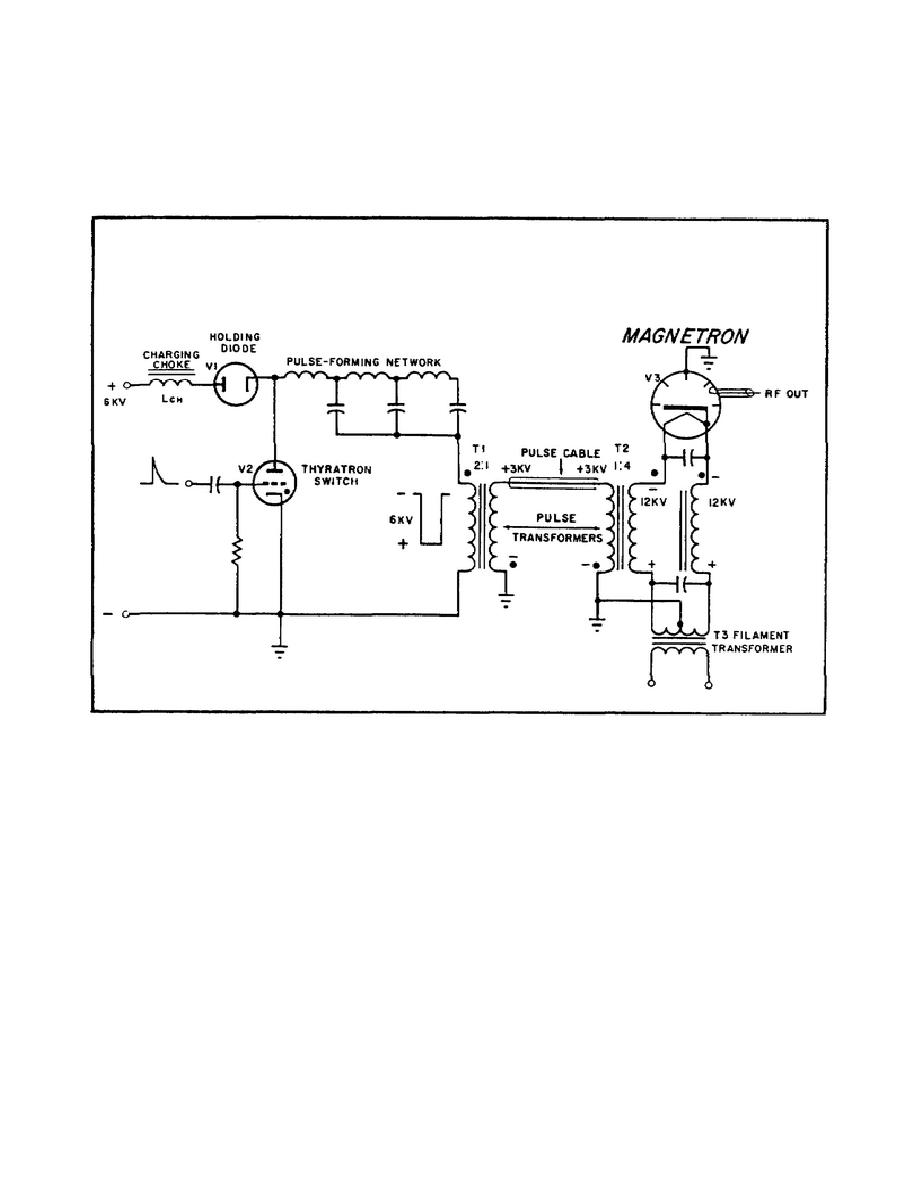
high-voltage modulator pulse to the magnetron.
To prevent losses due to
reflection of the pulse, the pulse cable must be terminated in its
characteristic impedance. However, the impedance of the magnetron is high,
approximately 1,000 ohms. So, it is not practical to build a pulse cable
with a characteristic impedance of 1,000 ohms. That is why we use a pulse
transformer as an impedance-matching device.
Figure 65.
Pulse Transformers Used as Impedance-Matching Devices.
c. Two pulse transformers, T1 and T2, are used to match impedances in
the high-level modulator in Figure 65.
Pulse transformer T1 couples the
pulse cable to the modulator. Not only does T1 match the impedance of the
PFN and pulse cable, it also steps down the modulator pulse voltage.
Lowering the pulse voltage allows the use of a smaller pulse cable with less
high-voltage insulation.
Pulse transformer T2 couples the low-impedance
pulse cable to the high-impedance magnetron.
Also, T2 steps-up the pulse
voltage and thus allows the PFN to operate at a lower voltage than the
magnetron.
4.
Brief review.
a. The pulse transformer is a specially-designed transformer used to
pass high-voltage pulses without distortion.
82



 Previous Page
Previous Page
